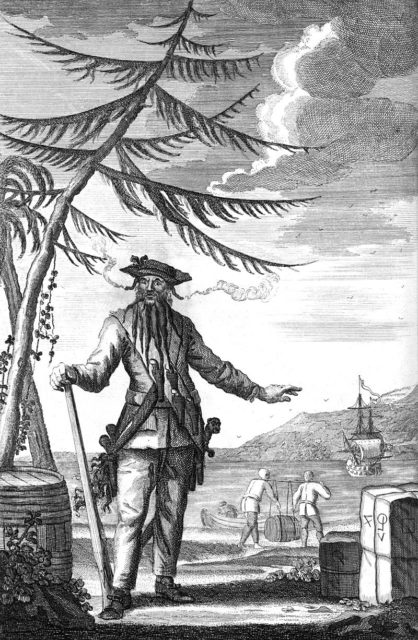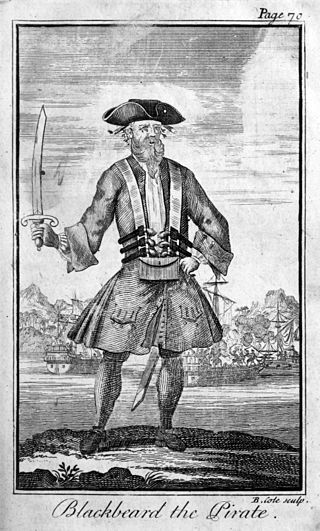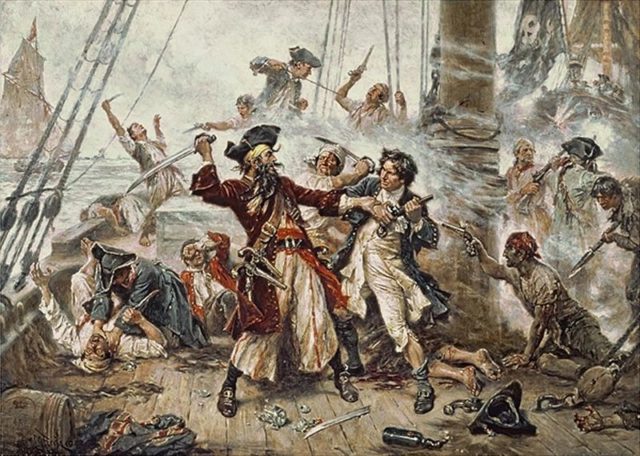One of the worlds most infamous pirates was Blackbeard. It has been claimed that he was not actually a blood thirsty villain; he had never killed anyone.
The historian Colin Woodward has said that for three centuries Blackbeard has been known by the wrong name. He was actually Edward Thatch, not Edward Teach. The guiding authority and the writer of the golden age of piracy has killed the myth in his book after travelling to Blackbeard’s hometown of Bristol.
Yet Blackbeard was the victim of rumours and was most likely a decent man, the leading pirate historian has alleged.

The NBV drama Crossbones, the game Assassin’s Creed IV: Black Flag – everything about him has given the wrong impression this whole time. Historians say that the reputation of Blackbeard being a violent pirate was created by authorities to legitimise hunting for him.
The research Mr. Woodward has found says there is no proof that he hurt or killed anyone. Aside from his final battle where he himself had been beheaded, Blackbeard was actually a remarkably good judge of the force he had.
Blackbeard had been the captain of the Queen Anne’s Revenge. Its flag had an image of a skeleton spearing a heart and toasting with the devil. This was in order to intimidate his enemies into surrendering without anyone being harmed.
Blackbeard was born with the name of Edward Thatch in the town of Bristol in the year of 1680. Not much is known about his early life, except that he went to sea as a privateer, which is a legalised pirate, during the Spanish Succession. This is where he had robbed ships in the West Indies. The war had ended in 1713; he then turned to piracy. By the year 1716, he was serving under the command of Benjemin Thornigold, who was a pirate captain.
On that ship, he had sailed from the pirate colony of the New Providence, located in the West Indies, to the American mainland. The pirates had captured several ships; the cargo included wine, flour, silk, and gold.

In 1717, after the pirate crew had attacked a large merchant ship, it headed for the French islands of Martinique. Blackbeard took over the captured ship as the captain.
They had equipped the boat as a warship. He added several guns, and then renamed it the Queen Anne’s Revenge.
There were dozens of eyewitness accounts of his victims; there is not one instance when he had killed anyone. That was prior to his final battle with the Royal Navy.
Specialists have discovered an impressive display of fascinating artefacts from Blackbeard’s Queen Anne’s Revenge wreckage since 1996.
The archaeologists have found onion bottles and two bells of Portuguese or Spanish origin. There was a coin weight with Queen Anne’s likeness stamped on it.
They had discovered gold flakes, a syringe, fragments of wine glasses, cuff links, buttons, glass beads, and buckles. The same squad had as well discovered 11 cannons from the pirate ship. One was found in 2005 and another in 2007. A rare fine was a partly gilded hilt that was thought to have held the sword of Blackbeard.

Underneath his hat he would tie lit fuses, dangling some of them down the sides of this face to surround it with a halo of smoke and fire and make him look more frightening.
The merchant crews would take one look at his appearance and the army of wild men surrounding him bearing cutlasses, muskets, and prehistoric hand grenades. They would surrender without even firing a shot, Mail Online reported.
Blackbeard had formed an alliance of pirates which preyed on shipping and the ports located in the West Indies off the coast of the U.S. eastern seaboard.
He passed away on November 22nd, 1718, at the age of 38 during the attempt by the Governor of Virginia to capture him.
